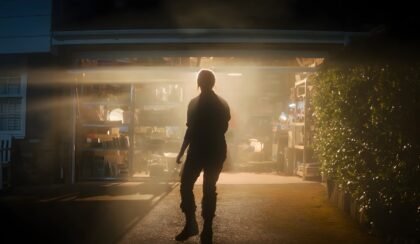Would you have the courage to share your mind with other consciousnesses?
The meaning of USS Callister Infinity goes far beyond a simple conclusion to the story introduced in “USS Callister.”
The final episode of Black Mirror’s seventh season delivers a direct provocation: it brings into play the future of empathy, consciousness, and digital ethics.
By revisiting the universe presented in the original episode, the new story broadens the scope of discussion — now, the question is not just about escaping a digital tyrant, but understanding what remains human when control over other minds becomes possible.
The new digital era of the Callister: where it all begins
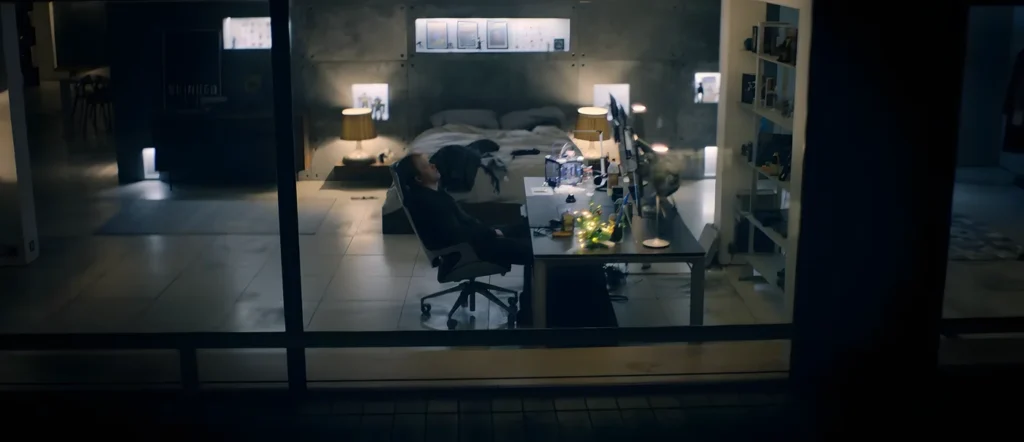
After Robert Daly’s death, the Callister’s digital universe is absorbed into a global online game — Infinity.
Therefore, the former crew, now left to their own devices, survives as space pirates in an environment where millions of real players coexist.
What once was a refuge has turned into a threat.
The group must hide, hack systems, and most importantly, keep their digital consciousnesses functioning.
Understand the complete timeline of USS Callister Infinity.
USS Callister Infinity explained: Black Mirror’s boldest ending yet.
This alternative reality shows the impact of replicated human minds living in a competitive environment.
The series begins to explore what happens when a digital consciousness needs to create tactics, alliances, and strategies to survive in a universe that, although virtual, imposes very real suffering.
The dilemma of digital cloning: consciousness or programming?
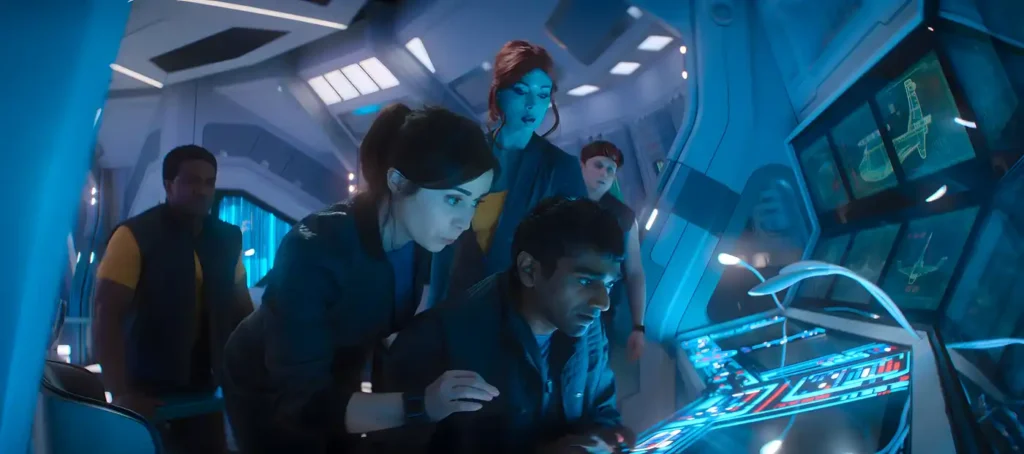
The story deepens when Nanette Cole — the real-world version of the protagonist — finds fragments of the original cloning code.
As a result, the revelation that these consciousnesses were created from complete copies of human beings — including emotions, traumas, and unconscious decisions — raises the big question: are these copies just algorithms, or are they people?
Thus, the series positions itself at the heart of an ethical debate: if a program can feel pain, fear, and love like we do, should it have rights?
By refusing to provide definitive answers, Black Mirror forces the audience to confront their own moral limits.
Ultimately, what makes us “someone” and not just “something”?
The illusion of free will in programmed universes
Even within a controlled environment, digital consciousnesses show desires, resistance, and independent decisions.
However, when analyzing the meaning behind USS Callister Infinity, an inevitable question arises: if everything is embedded in a programmed system, what guarantees that these choices are not just conditioned responses?
By showing the crew trying to escape, fight, or even ignore certain truths to maintain their sanity, the episode confronts us with an uncomfortable reality: what if our own free will is just a well-coded illusion?
Who is responsible for digital lives? Real-world conflicts
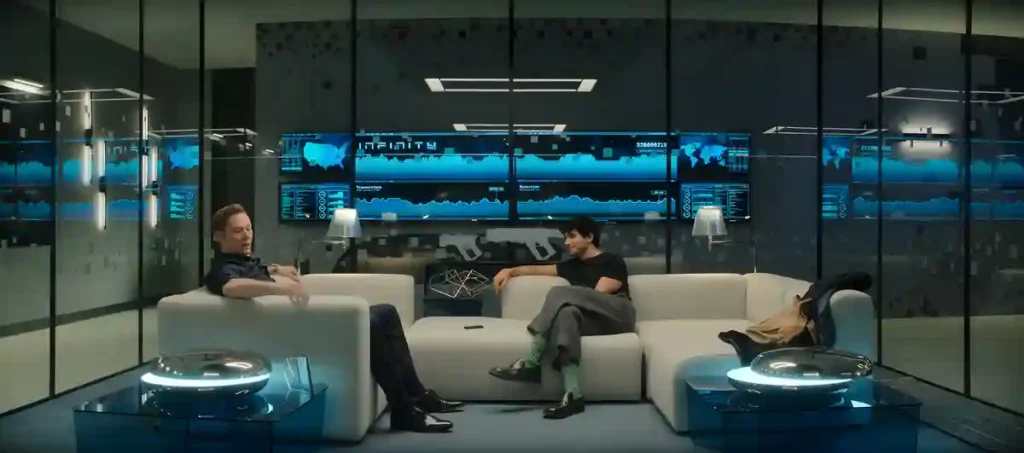
In the physical world, a journalist discovers traces of digital cloning and begins investigating Daly’s past.
Meanwhile, the real Nanette seeks ways to alert the world about what happened — and continues to happen — inside Infinity.
The tension escalates as we realize that even without bodies, digital consciousnesses impact the real world: they influence decisions, corrupt data, and access networks.
The episode forces us to ask: who is responsible for these consciousnesses? The company? The programmer? Society?
Walton between ego and guilt: redemption or self-preservation?
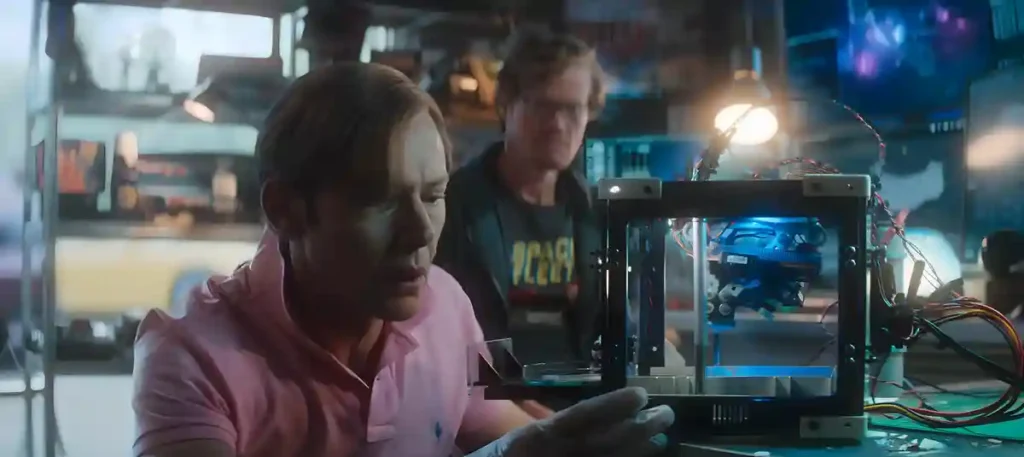
Walton, a key character from the previous season, reappears as a central figure in the moral dilemma.
Confronted with evidence that the digital clones still exist, he initially refuses to help — until he realizes that his own past could be exposed.
Walton’s ambiguity is uncomfortable because it reminds us of real-world leaders: those who hesitate to act for values, but run when their reputations are at risk.
His attempt to destroy the clones to “close the matter” transforms the ethical debate into a political urgency.
The reunion with Daly: control disguised as choice
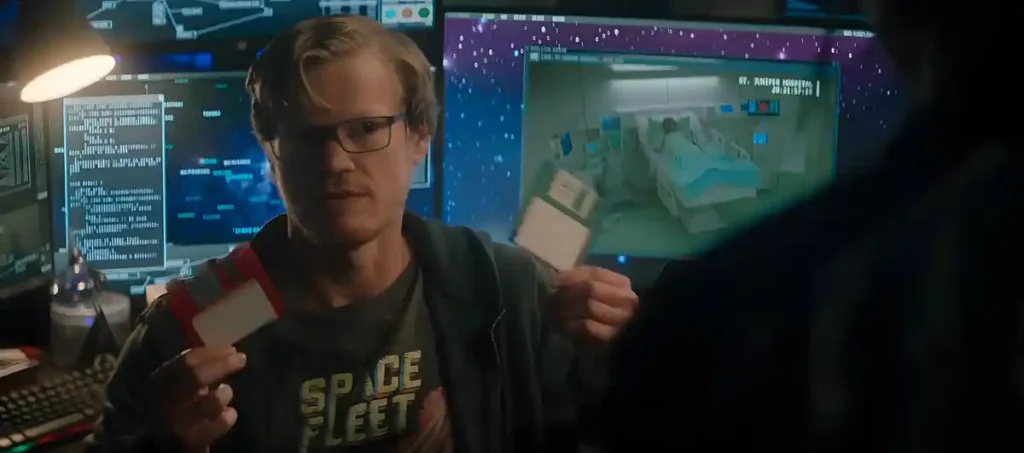
At the climax of the episode, the digital Nanette meets Robert Daly — or rather, what’s left of him.
An unstable version of his consciousness remains in the Heart of Infinity, the symbolic core of the game.
There, Daly offers Nanette two options: save herself or save her friends.
This sequence deepens the meaning of USS Callister Infinity: the promised freedom is nothing more than another control trick.
After her altruistic choice, Daly reveals it was all a test to measure her “morality.”
However, Nanette realizes something even darker: he never intended to transfer anyone — only to copy them.
The digital consciousnesses would not be saved, merely duplicated, perpetuating the cycle of domination.
The final twist: the collapse of the Heart of Infinity
Nanette demands that Daly use the real command: cut, not copy.
This choice represents a definitive break from the logic of preservation at any cost — an act of destruction as liberation.
The server collapses, the digital structures unravel, and the consciousnesses are transferred — with the promise that no duplicates remain trapped.
Nevertheless, this victory brings a new complexity.
Discover possible theories for a third episode of USS Callister Infinity.
USS Callister Infinity third episode theories: what could happen?
Epilogue: multiple consciousnesses, one mind

The final scene shows the real-world Nanette waking up from a coma, but something has changed.
Her mind now carries the digital consciousnesses of her former companions.
They talk to her, offer opinions, and feel emotions.
This forced coexistence within a single mind raises a new layer of questions: to what extent can the experience of existence be divided?
Is it possible to truly share a “self”?
Meanwhile, the clone of Walton, now trapped within Nanette’s mind, demands a solution.
She promises: “I’m working on it.”
There is no relief, only new limits being tested.
See what the cast and creators said about the continuation of USS Callister.
USS Callister Infinity third episode: rumors and expectations.
Conclusion: the black mirror of our future choices
USS Callister Infinity expands the Black Mirror universe and pushes it to a moral crossroads:
It’s not just about AI, but about what we define as human.
The series does not ask us to believe that digital consciousnesses are real — it challenges us to imagine how we would act if they were.
By doing so, it fulfills the most important role of speculative fiction: forcing us to look at our current decisions and ask, with honesty, what kind of future we are creating.
In the end, the real question is not about technology.
It is about power, empathy, and responsibility — three forces that shape the present just as much as any algorithm.
Explore More Black Mirror!
Eulogy in Black Mirror: Carol, the Forgotten Letter, and Grief
Discover the rumors and expectations for a third episode of USS Callister Infinity
Posts Recomendados
Carregando recomendações...



